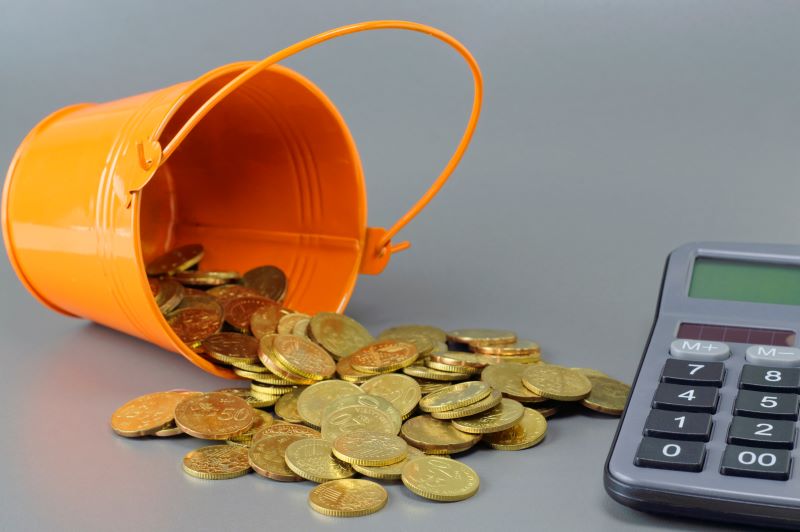

Ready to Retire? Intelligent Strategies for Handling Your 401(k) Nest Egg
As you near retirement, one of your most important decisions will be developing a plan around the retirement savings in your 401(k) or similar tax-deferred plan that you have been diligently building during your working years.
There are many investment options available so making the right decision about the type of investment you transfer your 401(k) into and who will help manage those precious assets, requires an objective, well-thought out strategy.
We can’t control how long we live, but there are ways to manage the risk of outliving our savings. Your advisor can help you find a strategy that balances your need for income against the length of time that your money needs to last.
This article is intended to help you prepare, financially and mentally, for life after work by sharing smart strategies for managing your nest egg as a retiree.
This article shares tips, including:
- What should I do with my 401(k) plan after I retire?
- The reason the 4% rule is popular among some retirees
- How systematic 401(k) withdrawals can work
- Why financial industry professionals hail bucket withdrawals
- The pros and cons of a fixed-percentage strategy
Should I move my 401(k) into a different type of retirement account post-retirement?
So you’ve finally reached the time when you retire. Congratulations! Now the question is what should you do with your 401(k)? Here are the options that you can explore.
- You can leave your retirement savings in your existing 401(k) account until you reach the age for required minimum distributions.
- You can convert your 401(k) into an individual retirement account (IRA).
- Start cashing out your 401(k and take a lump-sum distribution or installment payments
- Purchase an annuity through a recommended insurer
The 4% Withdrawal Rule
What is the 4% rule? It suggests that you can withdraw an amount that is equal to 4% of your savings during the year you retire and then you adjust future withdrawals for inflation each subsequent year for 30 years.
There are obviously many factors that can influence how much is a safe amount to withdraw including your risk tolerance, tax rates, inflation, and market downturns.
The 4% withdrawal rule is a familiar strategy for retirees who are concerned about running out of money. Unfortunately, it cannot guarantee that you will have an adequate income in retirement. Nevertheless, it may provide a conservative starting point for calculating your required income.
Despite being a rule of thumb for many, the 4% withdrawal rate has also been criticized by some financial advisors. Some see it as too conservative because it sometimes results in retirees having less spending money than they would like.
On one hand, this may be true, since most people do not know how long they are going to live or how long their nest egg will last. On the other, the 4% rule may provide a good starting point for determining whether or not your nest egg will meet your wealth management goals.
Fixed-Dollar Withdrawals
Fixed-dollar withdrawals are another popular strategy. Using this approach requires deciding in advance how much you want to withdraw each month from your nest egg. Next, you stick with that amount over time. The upside is that this strategy is easy to calculate and can be adjusted for inflation as needed.
It can also be an appropriate choice if you know that you will need a set amount of money each month in retirement. For example, when you have substantial monthly expenses, like a mortgage or utility bills that are fixed long-term, it may be worthwhile.
ViaWealth Has Independent Wealth Solutions To Protect Your Nest Egg During Market Instability
Fixed-Percentage Withdrawals
Fixed-percentage withdrawals are based on a predetermined amount of your portfolio. In other words, you might decide that 10% of your nest egg each year will be withdrawn, no matter what the market does. This strategy assumes that your portfolio may grow at a specific rate over time and can be adjusted for inflation.
At the same time, it requires you to have enough money available to cover the withdrawal amount in case of an emergency or unexpected expenses. This is why some financial experts recommend using this method only if you are financially stable.
In contrast with variable withdrawals, fixed-percentage withdrawals take your investment risk into account by adjusting your withdrawal amounts according to how well or poorly your investments are performing at any given time. This is generally more precise than variable withdrawals, since they are based on a set percentage rather than an arbitrary dollar figure.
Systematic Withdrawal Plans
You may be wondering how you can withdraw money from your 401(k) without incurring penalties. One potential solution is to use a systematic withdrawal plan. This involves setting up an automatic withdrawal of a certain amount each month.
Its benefits that it may protect you from taking too much out of your nest egg when the stock market is down. Similarly, it may also help prevent you from spending too much. Sometimes you may want to make withdrawals from your 401(k), though you do not want to deal with figuring out how much money should go into each monthly deposit.
Thankfully, there are services available online for times like these. They can calculate this number for you based on the information you provide about your current assets and income level.
Withdrawal Buckets
Among the variety of strategies to consider, one of the most often recommended to retirees is known as the “bucket strategy.” This involves dividing your investments into different sums (or “buckets”), each with a different withdrawal rate. For example, you could have a bucket for emergencies and another for your regular expenses.
In this case, you divide your IRA into three or four separate accounts: For example, you may have one that you use for expenses like rent, food, and utilities; one for rainy-day funds; and one to save for your grandchildren’s education.
You might even have a fourth account earmarked entirely for travel funds. Then, each month as you receive income from your 401(k) nest egg—and after taking out taxes—you can take money out of each bucket, depending on whether it is time for an expense.
The amount that you take out from one bucket can be replenished by the next bucket when it is time to withdraw funds again. The idea is that when it comes time to sell some of your assets to cover bills or provide income during retirement, having multiple buckets allows you some flexibility regarding where your money goes.
Your Net Growth

Whenever you plan to retire and live off of your 401(k) investments, it is important to have a strategy that lets you manage your money without outliving it. If you are not prepared to make your nest egg last, you can risk running out of money at the worst possible time.
Thankfully, as you can see, there are many possible strategies for managing your 401(k) nest egg. As your goal of retirement approaches, your ViaWealth advisor can help you identify the best strategies to make sure that you can enjoy retirement. Reach out and contact us today for an investment portfolio review. Find out why some may call us the best wealth management advisors Kansas City has available.


